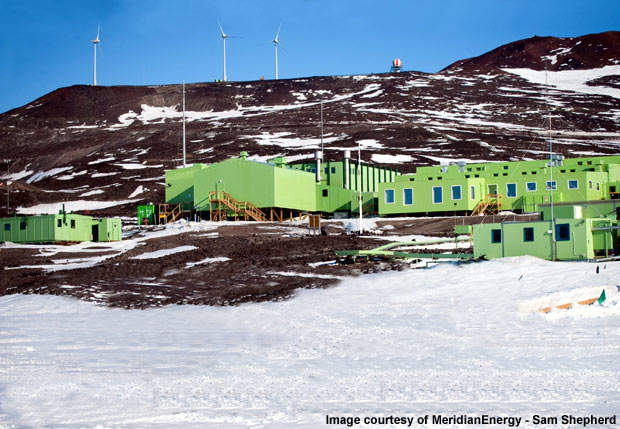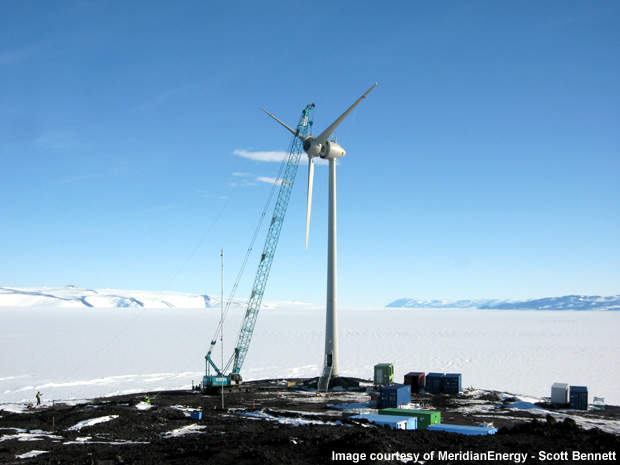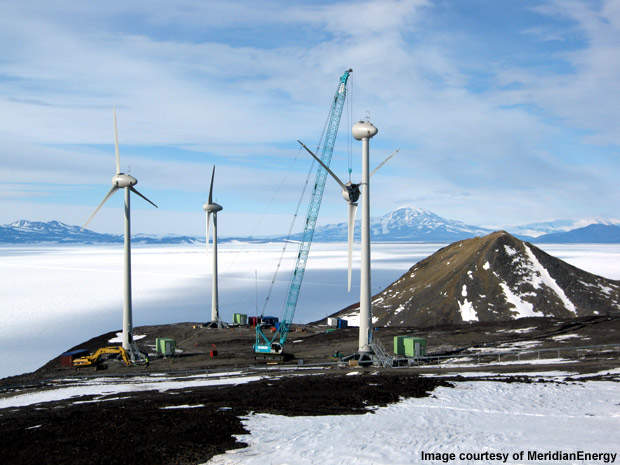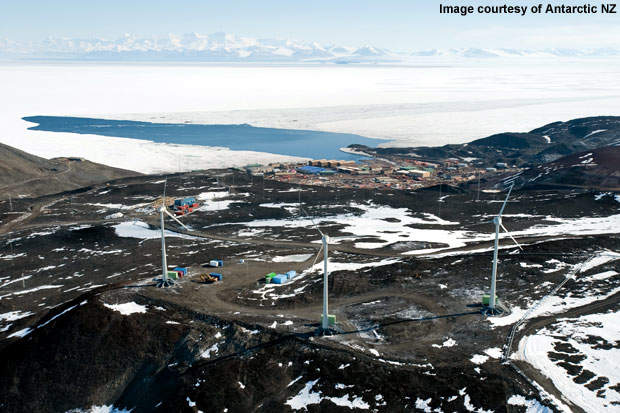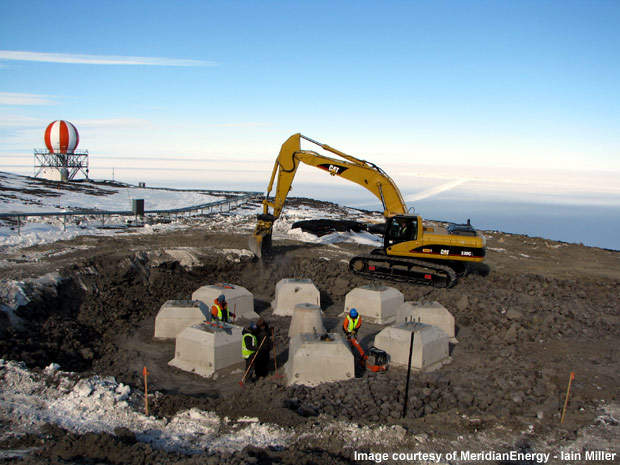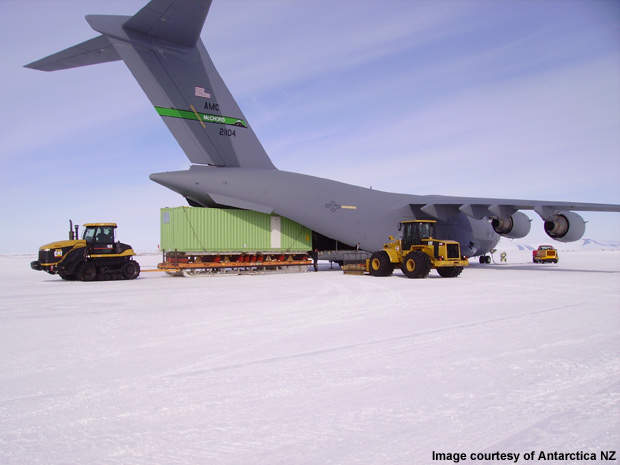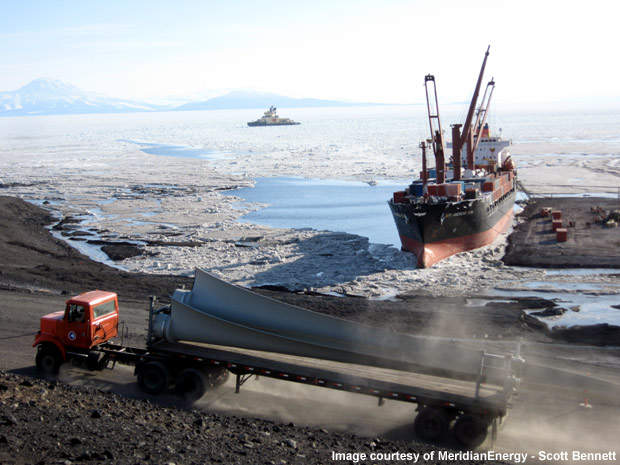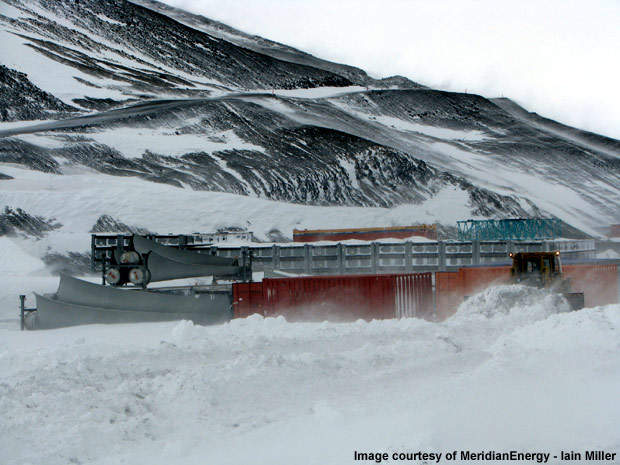The Ross Island Wind Farm (RIWF) resulted from the construction and integration of a small three-turbine wind farm on Crater Hill, Ross Island, Antarctica. The 0.99MW wind farm is the southern-most wind farm in the world. It supplies power to and links the electrical grids of both New Zealand’s Scott Base and the US’ McMurdo Station.
The purpose of the project is to offset power generation diesel-fuel consumption at the two research stations on Ross Island, Antarctica. The three turbines are predicted to save 11% of the fuel used annually to provide electricity on Ross Island.
The project was funded by the New Zealand Government and built under an alliance between Antarctica New Zealand (AntNZ) and Meridian Energy Ltd (Meridian) with support from the US National Science Foundation (NSF). The alliance was tasked with the procurement, construction, commissioning, operation and maintenance of the RIWF.
Stage 1 of the RIWF was designed to be a “proof of concept” project demonstrating the supply of wind energy in extreme polar conditions. If proven successful, subsequent proposed wind project stages could offset up to 40%-50% of the fuel used for power generation.
RIWF project details
The project was initiated in early 2005 when Meridian was invited by AntNZ to assess the wind generation potential for supplying Scott Base. The Crater Hill site, located nearly halfway between the two bases, was identified as the preferred site and a wind-monitoring mast was constructed.
Discussions were held with NSF, which under the US Antarctic Program had been investigating wind energy supply for McMurdo Station. In August 2007, Meridian presented a project proposal to AntNZ and NSF, which was accepted.
The funds for the project were obtained in September 2007. The wind farm was planned to be constructed over two Antarctic summer seasons (November to February).
The focus of the 2008/09 season was to construct the wind turbine foundations, electrically connect the two bases and transport all the wind turbine equipment to site.
The second season in 2009/10 saw the wind turbines constructed and commissioned in December 2009, followed by system optimisation testing in February 2010. The farm was officially opened in January 2010.
Ross Island wind farm details
RIWF employs three Enercon E33 wind turbines, each with a capacity of 0.33MW. The first turbine of the wind farm became operational in December 2009, and at full load, had more than twice the capacity to supply Scott Base’s total load of 150kW, allowing the Scott Base diesel generators to become silent.
Wind farm construction
The construction of the wind farm began in November 2008. The project was unique compared to other wind farms as work could only be carried out during summer, when there was access to the site in the polar region.
The key engineering innovation was the construction of the foundations that support the wind turbines.
Due to sub-zero temperatures, no concrete manufacturing facilities or the availability of aggregate and fresh water, it was not possible to employ the typical wind turbine gravity pad foundation. Instead, a pre-fabricated foundation was designed and built in New Zealand and shipped to the site.
Each foundation was built by using eight 13t pre-cast concrete blocks frozen into the permafrost.
The blocks were laid in a circular fashion in an excavated area and refilled so that the tops of the blocks are nearly flush with the ground. A steel spider foundation with eight legs was then bolted to each block of the foundation.
The towers of the turbines were fixed on top of the laid steel structure. The work involving installation of the turbines was carried out during late 2009.
The installation of power systems between Scott Base and US McMurdo Station was also carried out during the construction.
Wind farm transmission
The power generated by the RIWF will be transmitted to New Zealand’s Scott Base operating at 50Hz and the American base at McMurdo Station operating at 60Hz.
The power transmission will be carried out through an electrical grid consisting of ground-laid cables connecting the wind farm to Scott Base and the base at McMurdo station. The turbines generate electricity at 60Hz and a static frequency converter was installed at Scott Base to convert the electricity to 50Hz for use.
In addition, the system also includes a flywheel system that ensures stability. The flywheel can absorb or supply 500kW for 30 seconds to maintain the system frequency during sudden wind changes.
Environmental protection
The Antarctic Treaty principles of environmental protection were incorporated in the project development. The operator is also focusing on reducing the environmental impacts of the wind farm’s operations.
The three wind turbines of RIWF will cut down the diesel fuel required by the bases by 463,000l and reduce the carbon dioxide emissions by 1,242t per annum.
The energy produced through the fossil fuels is being substituted by the renewable wind energy generated by the wind farm. The replacement not only reduces the greenhouse gases but also reduces the risk related to the transportation and storage of liquid fuel on Ross Island.
In addition, developments pertaining to the further reduction of fuel consumption and greenhouse gas emissions at the bases by up to 40-50% are under investigation.

